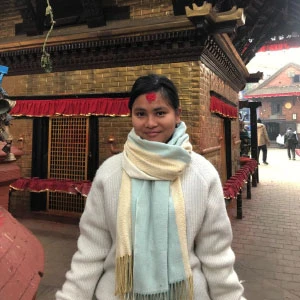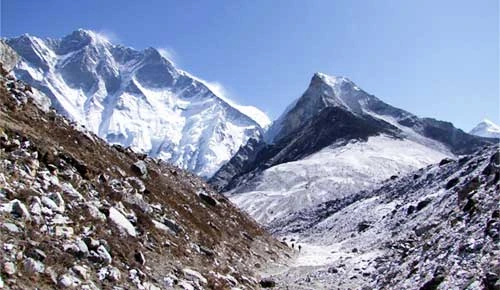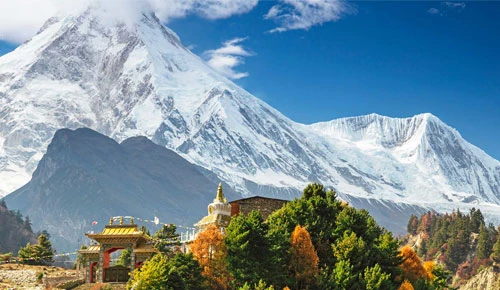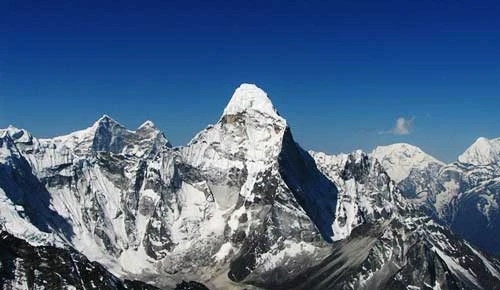Why Climbing Mera Peak is the Ultimate Adventure for Aspiring Mountaineers
Rising to an altitude of 6,476 meters (21,246 ft), Mera Peak is one of Nepal’s highest trekking peaks and a dream climb for every aspiring mountaineer. It is an adventure that is both challenging and beautiful, offering panoramic views of the five tallest mountains in the world: Everest, Lhotse, Makalu, Cho Oyu, and Kanchenjunga. The thrill of standing atop this Himalayan giant, surrounded by snow-capped peaks and pristine landscapes, is an experience that stays with climbers for a lifetime.
Mera Peak climbing will be the ideal high-altitude adventure that a person can experience. With better route transportation, experienced guides, and quality equipment offered by professional trekking agencies like us, this peak has become the first choice for those willing to advance to the next level of Himalayan climbing.
Additionally, the well-planned trekking routes, comfortable teahouses, and acclimatization stops make it highly suitable for beginner mountaineers, allowing them to build confidence and skills for more technical climbs in the future.
Whether you are looking for a personal challenge, breathtaking photography opportunities, or the chance to experience authentic Sherpa culture, Mera Peak climbing promises a rewarding adventure that combines natural beauty, high-altitude excitement, and professional guidance, making it truly a must-do Himalayan expedition in 2026.
Table of Contents
Why Mera Peak Climb is Ideal for Aspiring Mountaineers
Mera Peak, standing at 6,476 meters in the Everest region of Nepal, is widely regarded as an ideal peak for beginner climbers. It offers a unique combination of adventure, manageable technical challenges, and breathtaking Himalayan scenery, making it the perfect first step into high-altitude mountaineering.
- Moderate technical difficulty suitable for first-time climbers
- Professional guides and support staff ensure safety and guidance
- Opportunity to learn essential mountaineering skills like ice climbing and rope techniques
- Stunning panoramic views of Everest, Makalu, Lhotse, and other Himalayan giants
- Gradual altitude gain with proper acclimatization to minimize altitude sickness
- Well-established trekking and climbing routes with base camps along the way
- Combination of cultural experiences and natural beauty, including Sherpa villages and monasteries
- Accessible during the best trekking seasons (spring and autumn) for favorable weather
Best Time for Mera Peak Climbing
The best time to climb Mera Peak is during the pre-monsoon (spring) season from March to May and the post-monsoon (autumn) season from late September to November. During these periods, the weather is generally stable, skies are clear, and temperatures are moderate, providing excellent visibility of the Himalayan peaks. Spring brings blooming rhododendrons and alpine flowers along the trekking route, while autumn offers crisp air and spectacular panoramic views of Everest, Makalu, Lhotse, Cho Oyu, and Kanchenjunga. These seasons also avoid the heavy rains of the monsoon, reducing the risk of landslides and slippery trails, making the climb safer and more enjoyable.
Winter (December to February) is colder with heavy snow at high camps, which can make the summit push more difficult and riskier for inexperienced climbers. Summer (June to August) coincides with the monsoon, leading to unstable weather, low visibility, and dangerous trail conditions. Therefore, planning your expedition during spring or autumn maximizes your chances of a successful summit, provides ideal trekking conditions, and allows you to fully enjoy the natural beauty, cultural encounters, and thrilling experience of Mera Peak.
Highlights & Unique Experiences
- Summit of Mera Peak (6,476m) with panoramic views of five 8,000m peaks
- Trek through remote Hinku Valley and untouched Himalayan villages
- Glacier travel and High Camp adventure with full mountaineering experience
- Sunrise and sunset views over Everest, Makalu, Lhotse, Cho Oyu, and Kanchenjunga
- Immersion in Sherpa culture and local traditions
- Experience expedition-style climbing with ropes, crampons, and ice axes
- Witness alpine meadows, yak pastures, and pristine rivers
- Opportunity for personal achievement and high-altitude adventure
- Professional Sherpa-guided climb ensuring safety and success
- Ideal for first-time 6,000m climbers and aspiring mountaineers
Route Overview: From Lukla to the Summit
The Mera Peak Climbing route is a total Himalaya experience, which encompasses isolated paths, Sherpa villages, and high-altitude scenery. This itinerary is necessary to make sure that it is adequately acclimatized and culturally interacted and that the summit approach is safe.
Typical Mera Peak Climbing Itinerary
Day | Itinerary | Elevation (m) | Duration | Overview |
Day 1 | Arrival in Kathmandu | 1,400m | - | Meet your guide and team, rest from travel, and prepare for the climb ahead |
Day 2 | Sightseeing & Preparation in Kathmandu | 1,400m | - | Explore UNESCO World Heritage sites and complete final gear checks before departure. |
Day 3 | Fly to Lukla & Trek to Paiya | 2,730m | 4-5 hrs | Take a scenic flight to Lukla, then enjoy a gentle trek through lush forests and villages. |
Day 4 | Trek to Panggom | 2,850m | 6-7 hrs | Cross streams and walk through charming Sherpa settlements surrounded by greenery. |
Day 5 | Trek to Ramailo Danda | 3,276m | 6-7 hrs | Ascend gradually for panoramic views of Mera Peak and Naulekh Himal. |
Day 6 | Trek to Chhatra Khola | 3,122m | 6-7 hrs | Descend through rhododendron forests and narrow ridges with serene jungle ambiance. |
Day 7 | Trek to Kothe | 3,600m | 6-7 hrs | Enter the stunning Hinku Valley, following the Inkhu Khola River through alpine forests. |
Day 8 | Trek to Thangnak | 4,356m | 5 hrs | Gradual climb offering close views of Mera Glacier and surrounding peaks. |
Day 9 | Acclimatization Day in Thangnak | 4,356m | - | Short trek for altitude adjustment; rest and enjoy the scenic glacial valley. |
Day 10 | Trek to Khare | 5,045m | 4 hrs | Reach Khare, the base camp area of Mera Peak, surrounded by icy summits. |
Day 11 | Acclimatization & Preparation in Khar | 5,045m | - | Practice climbing skills, check gear, and rest for the upcoming ascent. |
Day 12 | Trek to Mera Base Camp | 5,350m | 4 hrs | Gentle climb over rocky moraine to reach the base camp on the glacier’s edge. |
Day 13 | Trek to Mera High Camp | 5,780m | 4hrs | Reach the final camp; enjoy breathtaking views of Everest, Makalu, and Kanchenjunga. |
Day 14 | Summit Day - Mera Peak (6,476m), descend | 6,476m | 8-9 hrs | Early morning summit push for sunrise views from Nepal’s highest trekking peak. Descend safely to Khare. |
Day 15 | Reserve/Contingency Day | - | - | Extra day for weather delays or acclimatization adjustments. |
Day 16 | Trek to Kothe | 3,600m | 6-7 hrs | Retrace steps through the Hinku Valley, enjoying the descent through forested trails. |
Day 17 | Trek To Thuli Kharka/Chhatrwabuk | 4,200m | 6-7 hrs | Last climb before the final pass crossing; rest with stunning sunset views. |
Day 18 | Trek to Lukla via Zatrwa | 2,800m | 7-8 hrs | Cross Zatrwa La Pass and descend to Lukla for a well-earned celebration night. |
Day 19 | Fly to Kathmandu | 1,400m | - | Scenic mountain flight back to Kathmandu, enjoying final views of the Himalayas. |
Day 20 | Departure Day | - | - | Transfer to the airport or continue onward travel, end of the Mera Peak adventure. |
Challenges and Preparations for Mera Peak Climbing
Climbing Mera Peak (6,476m) is an exciting adventure, but it comes with its challenges. Proper preparation is essential to ensure safety, summit success, and a comfortable experience. From high-altitude conditions to glacier travel, aspiring climbers must be physically fit, well-acclimatized, and mentally prepared for the journey.
Key Challenges:
- High altitude: Risk of altitude sickness above 5,000m
- Glacier terrain: Crevasses and slippery ice sections
- Cold temperatures: Extremely low temperatures at High Camp and summit
- Physical endurance: Long trekking days and demanding summit push
- Remote location: Limited medical facilities and communication challenges
- Weather variability: Sudden snow, wind, or storms
- Technical climbing: Use of crampons, ice axe, and fixed ropes
Preparations Needed:
- Physical training: Cardio, strength, and trekking with backpack
- Altitude acclimatization: Follow gradual ascent schedule
- Mountaineering skills: Crampon and ice-axe practice, rope techniques
- Proper gear: Layered clothing, boots, gloves, and climbing harness
- Hydration & nutrition: Drink plenty of water and eat high-energy meals
- Mental readiness: Patience, focus, and determination
- Professional guidance: Experienced Sherpa support and high-camp setup
Essential Equipment for Mera Peak Climb
Packing properly is crucial for safety and comfort. Below are the key items required for Mera Peak climbing:
- Mountaineering boots (insulated)
- Crampons and ice axe
- Climbing harness and carabiners
- Down jacket and sleeping bag (-20°C rated)
- Trekking poles and headlamp
- Layered clothing system (base, mid, and shell)
- Sunglasses and sunscreen (SPF 50+)
- Personal first aid kit and hydration bladder
Nepal Trek Adventure provides group climbing gear such as ropes, tents, and cooking equipment, ensuring all climbers have the necessary support for a successful expedition.
Safety & Tips for First-Time Climbers (list down in bullet points)
- Train at least 6–8 weeks before the climb with cardio, strength, and long treks.
- Practice walking with a loaded backpack to build stamina.
- Learn basic mountaineering skills such as crampon walking, ice-axe use, and fixed rope techniques.
- Follow the acclimatization schedule strictly to avoid altitude sickness.
- Stay hydrated by drinking 3–4 liters of water daily.
- Pack proper layers: thermal base layers, down jacket, waterproof shells.
- Choose broken-in trekking boots with ankle support.
- Carry necessary medications for headache, fever, stomach issues, and altitude-related symptoms.
- Never rush, maintain a slow and steady pace throughout the trek.
- Always listen to your guide’s instructions, especially on glacier or rope sections.
- Avoid alcohol and smoking during the trek.
- Double-check all your climbing gear at High Camp before the summit push.
Why 2026 Is the Best Year for Mera Peak Climbing
The year 2026 is shaping up to be one of the most exciting and favorable seasons for Mera Peak climbers. With improved trekking infrastructure, stable weather trends, better flight operations to Lukla, and upgraded mountaineering services in Nepal, it’s the perfect time for first-time and experienced climbers to take on this iconic 6,476m peak.
Reasons Why 2026 Is the Best Year for Mera Peak Climbing
- Improved weather predictions make summit planning safer and more accurate.
- Upgraded trails and teahouse facilities in the Hinku Valley enhance comfort and safety.
- Better-equipped climbing guides trained with modern rope and safety systems.
- More flight reliability on the Kathmandu–Lukla flight route.
- New rescue and communication technologies (satellite tracking, better communication devices).
- Growing demand for beginner-friendly high-altitude climbs, making Mera Peak even more popular.
- Stable tourism environment in Nepal with improved safety protocols.
- More flexible package options (private, group, luxury, fast-track).
Mera Peak Climbing Packages by NTA
1. Mera Peak – 18 Days
This 18-day Mera Peak itinerary offers a balanced approach with proper acclimatization, scenic trekking through the Hinku Valley, and a safe summit attempt of Mera Peak. Ideal for beginners, it includes glacier training, Sherpa guidance, and full support for a comfortable, rewarding Himalayan climbing experience.
2. Mera Peak Climbing – 20 Days
The Mera Peak Climbing 20 days itinerary provides extra acclimatization and a slower, more comfortable pace for climbers seeking maximum summit success. It includes extended training, exploration of remote valleys, and full Sherpa support. Perfect for those wanting safety, improved altitude adjustment, and a deeper Himalayan climbing experience.
3. Mera & Island Peak via Amphu Laptsa Pass – 25 Days
A challenging 25-day expedition combining Mera Peak, Island Peak, and Amphu Laptsa Pass. This route is designed for experienced trekkers seeking adventure, skill development, and two iconic 6000m summits in one journey. Full climbing support ensures safety, excitement, and rewarding Himalayan achievement.
4. Mera Peak Climbing from Khare – 4 Days
A short 4-day Mera climbing from Khare program ideal for trekkers already acclimatized at Khare. It includes essential glacier training, a well-supported High Camp, and a safe summit push to Mera Peak. Perfect for those seeking a fast, focused, and professionally guided climbing experience.
Conclusion
Mera Peak Climb offers prospective mountaineers adventure, altitude, training, and unique Himalayan beauty that they desire. It is not just a trek; it is an event that instills a certain level of confidence in future challenges. Mera Peak is by far the best place to begin in the world of Nepal mountaineering, as it is designed for those planning their next mountain journey or those wanting to see their first Himalayan summit.
Plan your Mera Peak Climb with Nepal Trek Adventure today and take your first step toward becoming a true Himalayan mountaineer.









